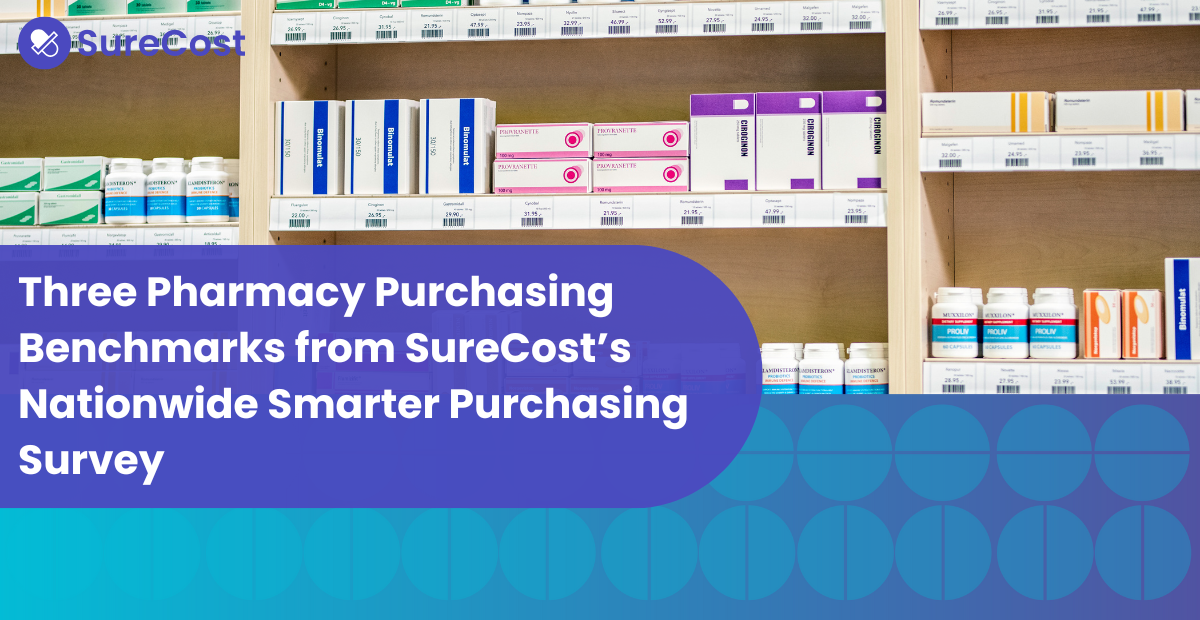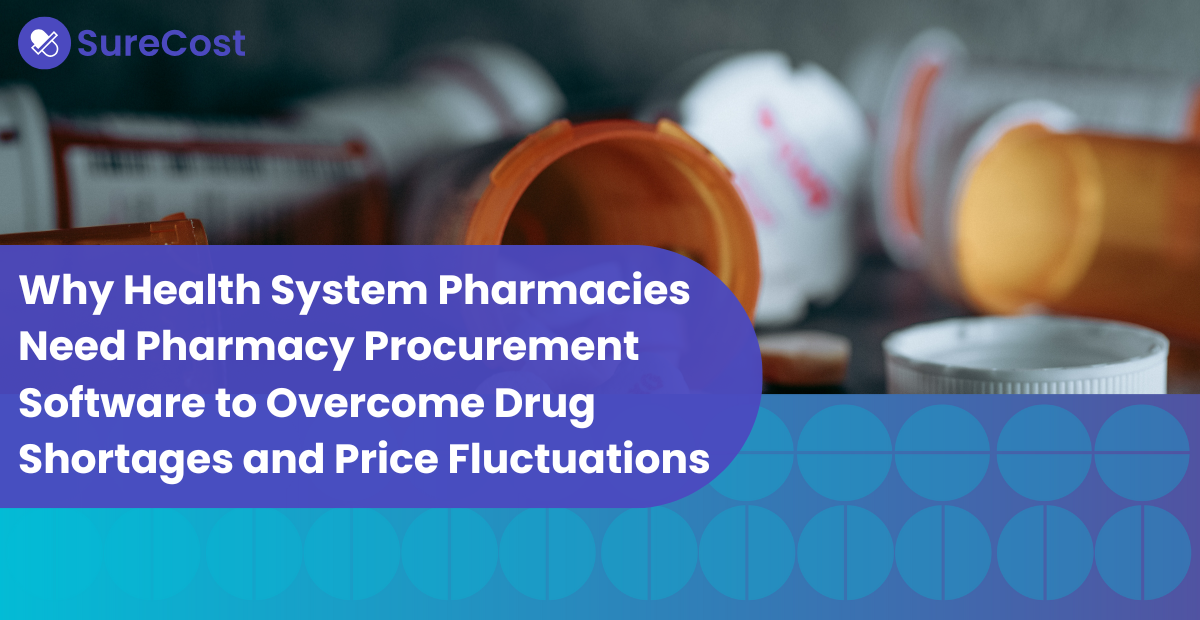What was designed to lower patient drug costs may cost health system pharmacies millions.
Drugs subject to the Inflation Reduction Act (IRA) continue to stack up. So far, the United States Department of Health and Human Services (HHS) has announced 26 drugs selected for direct pricing negotiations with drug manufacturers aimed at lowering expenses for Medicare recipients. These include some of the most commonly purchased drugs among these patients.
While the IRA may reduce patients’ costs, the law will drive up prices that health systems pay for these drugs, significantly increasing their cost of goods sold (COGS). This blog post will discuss which drugs are subject to IRA repricing and how health system pharmacies can prepare for the impact.
What Drugs Are Affected by the IRA
Here’s a breakdown of what drugs will be affected by the IRA and when negotiated prices will take effect.
Phase 1 (prices effective January 2026):
- Eliquis
- Jardiance
- Xarelto
- Januvia
- Farxiga
- Entresto
- Enbrel
- Imbruvica
- Stelara
- Fiasp, Fiasp FlexTouch and Fiasp PenFill
- NovoLog, NovoLog FlexPen and NovoLog PenFill
Phase 2 (effective 2027):
- Ozempic, Rybelsus and Wegovy
- Trelegy Ellipta
- Xtandi
- Pomalyst
- Ibrance
- Ofev
- Linzess
- Calquence
- Austedo and Austedo XR
- Breo Ellipta
- Tradjenta
- Xifaxan
- Vraylar
- Janumet and Janumet XR
- Otezla
In less than two years, 26 drugs (34 products), some of the most frequently prescribed items for Medicare recipients, will be subject to price changes that will shake pharmacy solvency. Why?
Why the IRA Could Cost Health System Pharmacies Millions
Under the IRA, Medicare negotiates prices for prescriptions commonly used by Medicare Part D recipients with manufacturers, limiting patients’ out-of-pocket costs and the amounts drug makers charge. To compensate for lower patient costs, manufacturers will launch new drugs with higher prices. Insurers will adjust coverage, and pharmacy benefit managers (PBMs) will update formularies to compensate for lower margins.
Payment delays on refunds from drugmakers mean additional financial losses for pharmacies. To receive reimbursement, pharmacies must update their systems to provide documentation and purchasing data, adding another expense in the wake of the IRA. Some pharmacies may now only receive reimbursement based on wholesale acquisition cost (WAC), adding another significant financial burden.
One consulting firm analyzed the impact of these pricing negotiations on pharmacy cash flows and found that “pharmacies which currently receive reimbursement from PBMs soon after dispensing medications will now experience a delay for drug manufacturer refund payments, potentially resulting in a weekly cash flow shortfall of $10,838.25 compared to prior operations.” Drug Topics has referred to the caps placed on reimbursement as the “maximum (un)fair price,” referencing how supposed cost-cutting initiatives patients could cost pharmacies millions.
HHS plans to announce another 15 drugs, including drugs covered under Medicare Part B and Part D, in its third rollout. Future phases will add at least 20 more drugs per rollout. While retail pharmacies can choose not to stock these products, pharmacies that are contractually obligated to stock these drugs have to “eat the cost.” What can pharmacies do to mitigate the huge impact of the IRA?
How Health System Pharmacies Can Mitigate the Impact of the IRA
Increasing drug prices, combined with constant drug shortages, mean that health system pharmacies must be creative and nimble when it comes to sourcing. Expanding their vendor portfolio and shopping outside the Top 200 allows pharmacies to leverage as many purchasing options as possible, including:
- Wider range of products
- Bulk discounts
- More rebate programs
- Negotiating better terms
Health system pharmacies also need to ensure they only pay for what they ordered at the agreed-upon price. SureCost’s latest Smarter Purchasing Report found pharmacies losing millions on unexpected vendor substitutions, vendors not invoicing at the contracted price and inaccurate charges. Everyone makes honest mistakes, even vendors. But with soaring drug prices, simple errors mean devastating financial losses to your health system.
Expanded purchasing options, the ability to quickly and easily compare all those items, consistently tracking and verifying purchases while ensuring compliance with contracts and changing regulatory compliance requirements (like DSCSA): It requires managing huge quantities of data and complex processes that could overwhelm health system teams already working at capacity.
That’s why smarter purchasing tools are crucial. A unified pharmacy management solution can integrate all that essential data and streamline workflows into a single, unified source of truth. For health systems, these solutions are no longer a luxury; in an increasingly complex pharmacy purchasing ecosystem, they’re essential to managing operations and ensuring health systems effectively meet patients’ needs while remaining solvent.
Prepare for What’s Next
SureCost helps health system pharmacies proactively manage rising costs, reimbursement delays and compliance complexity—all from a centralized platform built for pharmacy operations.
Want to see how SureCost helps you stay ahead of IRA changes? Book a demo.
-1.png?w=500)
.png)





